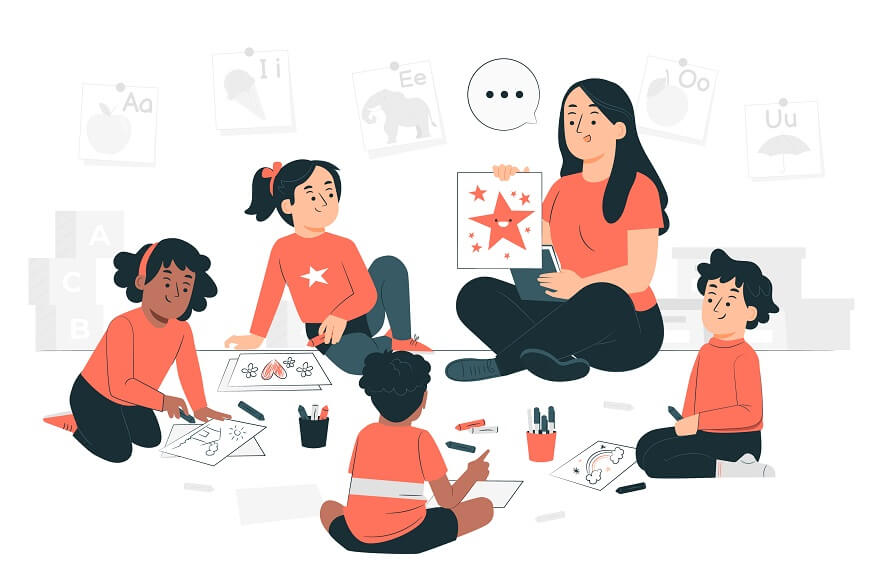“Are we products of our inherited genetic traits (nature) or the societal and environmental influence (nurture)?”
For centuries this question has intrigued psychologists, educators, and parents. Nature and nurture traditionally represent two dichotomous views in the study of child development.
Nature refers to the inherent genetic makeup and biological factors that contribute to our behaviours, personality traits, and intellectual capabilities. In contrast, nurture attributes human development to the environmental conditions and experiential learning to which a child is exposed.
Eminent philosophers of yesteryears like John Locke advocated the ‘tabula rasa’ or blank slate theory, implying that minds are blank at birth, and external experiences shape them. Conversely, Plato and Descartes championed the nature argument, contending that knowledge is innate and acquired at birth.
This blog analyses the implications of these concepts and their role in shaping an individual’s persona and behaviour.
Also Read: What is nature-based early childhood education
Role of Nature in Child Development
The term ‘nature’ encapsulates the genetic inheritance that shapes an individual such as hair and eye colour, height, and susceptibility to certain health disorders. However, it also plays a significant part in their cognitive growth and behavioural tendencies.
Children’s cognitive development is significantly influenced by genetic factors. It is seen that genes significantly contribute to children’s general cognitive ability, including memory, attention span, and learning speed.
Genetics also affect children’s behavioural patterns from an early age. For instance, studies suggest that factors such as temperament, aggression, and sociability have strong genetic components. Beyond cognitive capabilities and behaviour, genetics contributes to the physical development of a child. Physical traits, including height and weight, are to a large degree, governed by genes.
Genetics intertwine with environmental factors to create a child’s developmental trajectory. Despite the importance of genetic influence, it does not operate independently. The notion of gene-environment interaction captures how the environment and genes may cooperate or conflict to shape a child’s development.
Certain inherited traits can be shaped, stifled, or stimulated by environmental factors, such as nutrition, education, parenting style, or exposure to toxins. Hence, recognizing the intricate relationship between genetics and the environment is essential in understanding developmental processes.
Several mental health illnesses, like bipolar disorder and schizophrenia, demonstrate a strong genetic influence. Autism, a complex neurobehavioral condition impairing communication and social interaction, also exhibits profound genetic connotations. As per recent research, over 800 genes contribute to Autism, some of which significantly influence brain development post-conception. These findings compellingly testify to the role of genetics in child development.
Also Read: Assessment For Learning: Meaning, benefits, limitations, misconceptions
Nurture and Child Development: The Environmental Influence
Child behaviour is significantly impacted by both their environment and upbringing, fostering their character, attitudes, and overall personality traits. The immediate surroundings where children grow up or spend most of their time plays a key role in shaping their behaviour. Parenting styles, socio-economic conditions, cultural background, and even diet can mould physical, intellectual, and behavioural outcomes.
Extensive research exhibits that early-life stress or trauma predisposes children to psychological disorders such as anxiety and depression. Adverse Childhood Experiences (ACE) like physical or emotional abuse, neglect, or household dysfunction contribute significantly to mental health disorders. Additionally, a nurturing environment can foster resilience in children even with a high genetic propensity for a particular disorder.
In the current day, homes, schools, playgrounds, and even digital spaces constitute the fundamental environment for a child. Home, being the primary environment, significantly affects the child’s psychological development. This is where the child picks up initial habits, values, and behavioural traits. The child’s interactions primarily with parents or guardians largely shape their cognitive, emotional, and social behaviours. For instance, children brought up in homes characterized by warmth and understanding are more likely to showcase positive behaviour, while those from environments accompanied by violence, hostility, or neglect might showcase negative behaviour and psychological disorders.
Authoritarian parenting, characterized by high demands and low responsiveness, often results in obedient but less happy children. On the other hand, authoritative parenting – high demands but also high responsiveness – often results in children who are happy, capable, and successful.
Schools and teachers significantly influence children’s social and emotional development. An environment promoting respect, understanding, and patience fosters well-rounded and socially adept children.
Also Read: 10 Strategies to Build on Student Collaboration in the Classroom
Exposure to digital content influences children’s behaviour, interests, and learning patterns. It is crucial, therefore, that this exposure is healthily supervised.
Subsequently, exposure to nature also has a positive influence on children’s behaviour. Outdoor recreational activities can enhance social interactions, reduce stress, and improve mental and physical well-being, directly affecting the child’s behaviour.
The Interaction of Nature and Nurture
One of the most interesting and important discussions in child development is on the dynamic relationship between nature and nurture. These two interplayed factors both fundamentally shape and construct a child’s development.
The consensus amongst the experts now is that both these elements collaborate to influence a child’s early development.
Contemporary developmental research suggests that genes and environments always function together by triggering gene expression, a process known as ‘epigenetics’. Epigenetic changes can turn genes on or off and determine which proteins are transcribed; thus, genes can be influenced by the environment, such as nurture factors multi-dimensionally modifying predisposed genetic expressions.
Such epigenetic alterations – influenced by factors like stress, diet, or toxins – affect an individual’s physical and mental health.
For instance, a child having a genetic predisposition to perfect pitch can develop that capability only with adequate exposure and training in music.
Or a child has an innate capacity for language acquisition – encoded in the human genome – but the specific language the child learns depends on the environment. The linguistic environment creates the necessary conditions for the genetic predisposition of language learning to manifest.
Also Read: 5 ways to Nurture a good self-image in your kids
Conclusion
The nature versus nurture debate has evolved into a nature-and-nurture interplay in shaping a child’s development. It is not simply a matter of nature versus nurture but, more precisely, nature via nurture. Parents and caregivers should therefore understand this symbiotic relationship and provide a nurturing environment that supplements the child’s innate potential.










